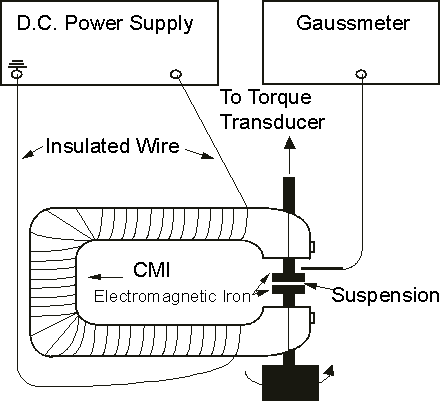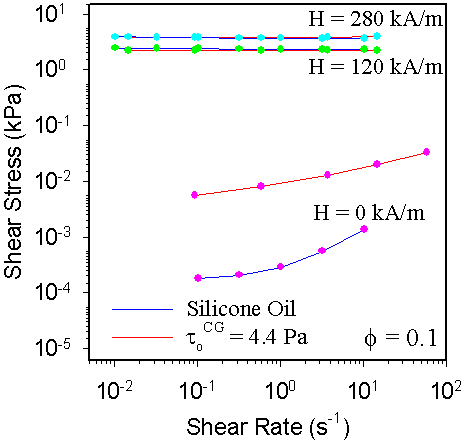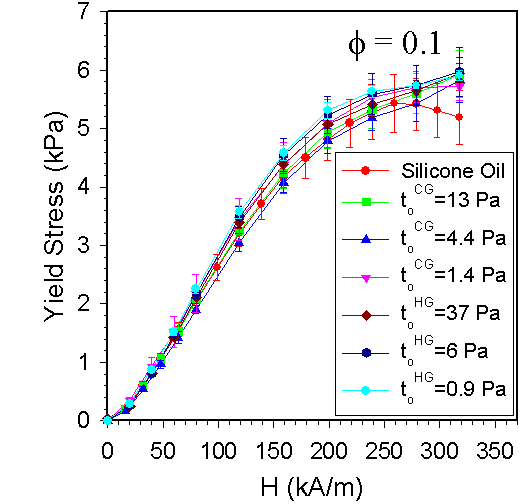We have modified a Bohlin VOR rheometer to measure the rheological properties of MR fluids exposed to externally applied magnetic fields. The experimental apparatus is shown schematically in Figure 1 below.
The suspension is placed between parallel plates which are located in the gap of a C-shaped electromagnet. A gauss probe is used to measure the flux density applied to the suspension. Yield stresses are measured by shearing a suspension to steady state at a specified shear rate, repeating for decreasing shear rates, and then extrapolating the shear stresses thus obtained to zero shear rate.
In the study described briefly here, the goal was to determine the extent to which the properties of the fluid in which the particles are suspended affects the rheological properties of the suspension as a whole. Samples were prepared with a fixed concentration of iron particles (10 vol%), dispersed either in oil, or in greases with different yield stresses. Results are described below.
Flow Curves
Shear stress is plotted as a function of shear rate in Figure 2 below for suspensions of iron particles in silicone oil and in a grease (grease yield stress = 4.4 Pa), for no applied field and for various applied magnetic field strengths.
For small magnetic field strengths, the characteristics of the suspending liquid influences the suspension behavior, but the samples behave similarly for large magnetic field strengths.
Yield Stress - Field Strength Dependence
Yield stress is plotted as a function of magnetic field strength in Figure 3 below for 10 vol% suspensions of iron particles in various suspending fluids.
The yield stress increases with magnetic field strength initially, and then saturates at large magnetic field strengths. The suspending medium has no influence on the yield stress (under these conditions). However, we do find that the suspending medium can impact the dynamic rheological properties of the suspension (Rankin et al, Rheol. Acta, 1999).


